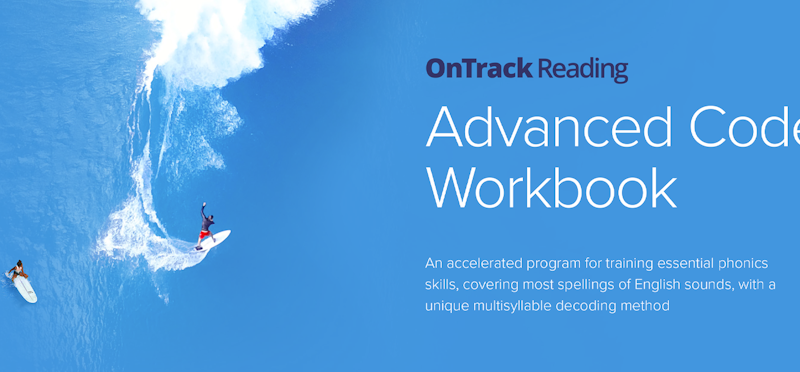If you like working with children, or volunteering to help young adults, consider becoming a phonics tutor. All you need to do is follow the steps described below. You will find little that is more rewarding than watching a child become a more proficient reader as you help him unlock the phonics code underlying English words.
- Find a student who needs tutoring in reading and volunteer to work with him. The student should already have at least a very basic understanding of the phonics of the single letters, such as that the letter t represents the /t/ sound, for example. Most of them do; it's the advanced code that confuses them. You should plan on spending about 40 to 50 hours with him in one-on-one instruction. Eventually, you will find that having a parent sit in on lessons will accelerate the process, but you'll probably be more comfortable working alone at first as you familiarize yourself with the program. Once a parent is involved to oversee the homework phase, your time with him will drop to 20 to 25 hours, typically.
- Start a file with obvious information on your student, such as parents' names, phone, address, age, grade in school, etc., plus a short description of any reading problems noted by his parents.
- Study how to administer the four phonics tests found this website on the Phonics Assessment Tests pages of the phonics program section.
- Administer the four tests to the student you plan on tutoring. This should take about 20 minutes eventually, but take your time the first time through. After the testing, discuss the results with his parent(s). Add the test scoresheet to his file.
- If the testing indicates a need for phonics instruction and you haven't already done so, order the workbook and the instruction manual and review the instructions in the first few lessons in the manual. (Note that a PDF of the program is now available. I recommend that each student should have a printed workbook, but ordering the PDF would be a good way to get started studying the program.)
- Schedule about an hour to work with your student and plan what you think will be an hour long lesson, detailing what you will cover during that hour. On pages 6 and 7 of the instruction manual you'll find a suggested structure for your lesson plan throughout the program. In addition, a Scope and Sequence is available now. It can also serve as a guide through the lessons. It's based on 40-minute lessons and homework sessions, but that can easily be modified. I routinely worked with clients of all ages for 75 minutes, for example.
- Conduct the first lesson with the child. When it's over, take good notes as to how the lesson proceeded, what you had trouble with, what went well, etc. Be sure to note how much of the hour you feel you had the child's attention. Then plan your next lesson and schedule it. You will eventually be spending about 15 minutes after each lesson summarizing what happened and planning the next lesson, although at first it will likely take longer as you develop your own procedure.
- Pick up some of the books recommended on the page Children's Book Suggestions to use for reading practice during your tutoring sessions. Eventually, you will want to add books of your own choosing, but the ones suggested will work well.
- After several sessions, re-administer the test battery to ensure that progress is being made. If blending and segmenting are not improving, review the mapping process described in the instructions to be sure that you're doing everything correctly.
- Stick to the lessons as the instructions indicate, resisting the urge to "tweak" the curriculum. It works well if you present it according to the instructions. If you find yourself making up games, or creating new explanations, consider the possibility that you're dealing with a child that has undiagnosed vision issues that are make learning to read difficult (see #10 below).
- Finally, be sure to read Does My Child Have Dyslexia because a fairly large percentage of the struggling readers you will encounter will have vision issues of the sort discussed there. In fact, it would be advantageous to look up any vision therapy centers in your area and make them aware of your tutoring practice once you feel comfortable with the curriculum. You will find that children who have undergone vision therapy are often finally prepared to learn to read, but that many of them still need to be shown how English phonics is structured.
Additional Considerations
Student Age: The workbook can be used with any age from 6-year-olds to adults. It contains no pictures and the cover is relatively plain so that even an adult will be comfortable working in it. I've found that the ubiquitous pictures found in most teaching materials these days are unnecessary for teaching phonics. They will learn the material if you present it properly in accordance with the instructions. For that reason, you can tailor your tutoring business to the age you feel most comfortable working with. I've worked with adults, including some prisoners, high schoolers, middle school students, and emerging readers. You'll probably find that the greatest demand will be from parents of 2nd, 3rd, and 4th grade students who are struggling with early reading instruction because that is when parents are most likely to be aggressively looking for answers.
Attention Issues: Many struggling readers will, at first, have trouble sustaining attention. They're so used to failing at reading that they have developed all sorts of avoidance techniques so don't become frustrated if, after the first lesson, your notes indicate that you only had the child's attention for, say, 40% of the time. As long as you follow the Pacing Notes in the instructions and don't spend too much time on any one procedure, you should eventually find that the child is "with you" most of the session. This will happen because he will gradually come to understand that what you're teaching him actually works, and that he is becoming a better reader as a result.
Testing: Regarding the test battery, the results on the first two tests, the blending test and the segmenting test, should move to 100% by the time you administer the tests the second time a few sessions later. The third test, the phoneme deletion test, might take longer to get to 100%, but the retest will indicate whether to continue to work on the oral auditory processing exercise described in Appendix 2 of the instruction manual.
The fourth test, the code knowledge test, might not hit 100%, but you should see steady progress, particularly if you occasionally review the code knowledge page at the beginning of the workbook. You can even administer the code knowledge test again midway through lessons if you wish, and it should always be given when all the lessons are completed, just to demonstrate to him, his parents, and to you also, what he's learned. Once any of the first three tests hit 100%, they no longer need to be given again since he's unlikely to lose any of those skills once he's developed them.
Reading Level: The test battery doesn't include a test for reading level. However, you're quite likely to notice an obvious increase in both his confidence and his capability while reading aloud, and you should have him do some reading aloud during each session. Once you reach the multisyllable level in the workbook you should see his confidence increase significantly and any guessing strategy he's been using should begin to diminish as he gains that confidence. If the child's school regularly judges his reading level, note the level of books he's reading when you start working with him, and then again at the end of your sessions. If possible, get his reading level about a year later to see if he's been making good progress.
Two Ways to Structure Your Tutoring Business
One way is to involve parents, once you're comfortable with the curriculum. By having a parent sit through most sessions, even if they're reading a book of their own much of the time, or scanning their phones, you can train the parent to do the homework as described in the instruction manual. Otherwise, you'll have to oversee his reviewing of the material yourself which will approximately double the time you will need to work with any particular child.
You can also enlist the parent to continue the process once you've finished the curriculum by having the parent oversee the child's reading aloud for several months following the last lesson. If you do this, make sure the parents understand how to make the appropriate corrections when their child misreads a word. (The proper error correction procedure is covered in Appendix 3 of the instruction manual.)
The alternative is to do it all yourself, including the practice reading necessary to become fluent. In my reading practice, I always had the parent oversee homework, and also take over the practice reading after I've finished working with a child. I usually managed to get a child through the complete workbook program in about 20 to 24 hours of lesson time. Without the parent's help, it would take me 40-50 hours to complete the workbook, plus any additional hours following completion that I felt were necessary to gain fluency.
Of course, you could take both approaches, depending upon whether a parent wanted to participate or not, knowing that a considerable amount of the additional time will be spent simply listening to the child read and making the appropriate corrections, or overseeing the homework review process. Just don't be tempted to skip over the homework review step. The repetition is necessary for the child to automate the processes involved. A single exposure won't be sufficient. This is true even of those who seem to catch on very quickly--they usually need the review as well.
Conclusion
I've worked with nearly 200 struggling readers using the same workbook for all ages. That, some concentrated study of the instruction manual, and a few books geared to varying reading levels are all you need to begin your own tutoring business. The instruction manual carefully lays out exactly how to present each concept they need to know, and each exercise in the workbook. Follow the instructions faithfully and you should soon be comfortable and getting good results.
I normally added the workbook cost to the charge for the first lesson, but I didn't charge a fee for the initial testing session and the discussion with the parent after testing. How you handle that is, of course, up to you.
Finally, if you do decide to pursue phonics tutoring, feel free to contact me with questions. (There's a contact link at the bottom of every page.)



